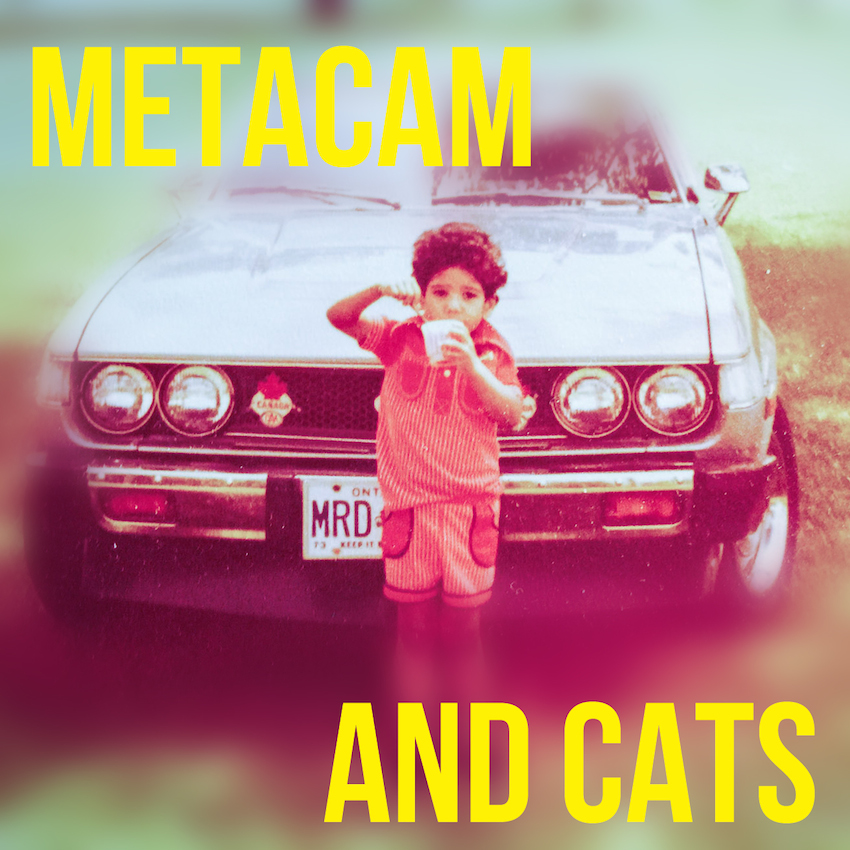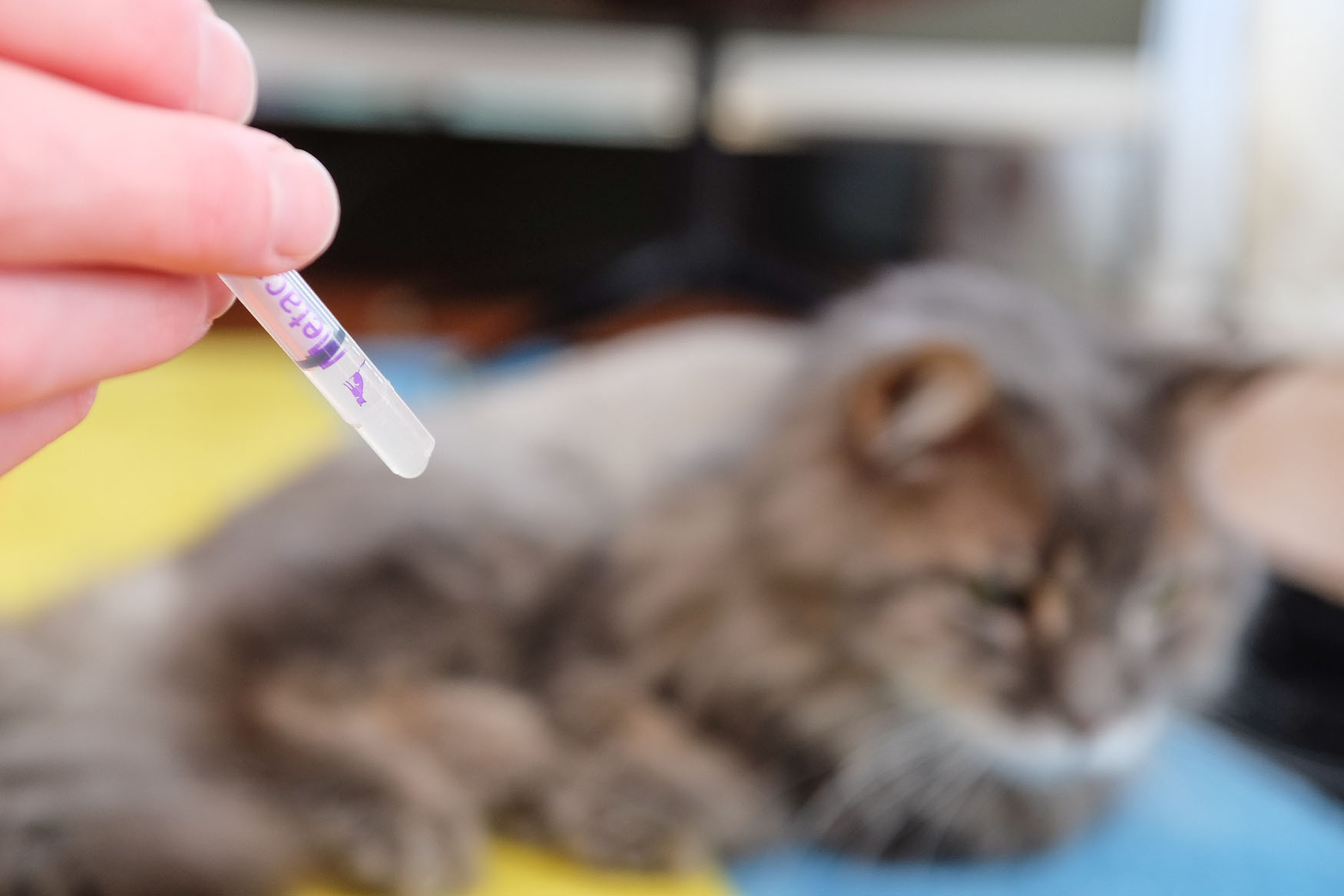
The fear of using drugs: Zack Vs Metacam
I didn't want to medicate Zack. I fully admit it. I didn't want to use any drugs - none at all. Let him live free, without intervention. That’s the dream. My grandmother lived peacefully until she passed away at home. No suffering, just one day we heard that she left us. This is what we all hope for - to pass on with dignity in our own home, surrounded by those we love.
Now look at all this stuff I use for Zack (some of it hidden under the fluid bag):
Now, I don't usually make car analogies, but this is me in 1977, eating ice cream while standing around in front of my dad’s brand new Toyota Celica.
That was the year that Toyota Celica’s looked like American muscle cars. It was also the year (or decade) where apparently you could drive your car onto city park grounds to picnic! Now that I'm getting older, I'm looking around for all these fascinating relics from my youth. And just recently, I found a vintage Toyota Celica, just like my dads (unfortunately I didn't get to buy it and they are harder to find every day).
In 1977, they even painted a Celica for the opening of Star Wars: A New Hope:
Most of these Celica’s are now gone. Even the Star Wars Celica. Their unibodies rusted off the road. Without the right upkeep and inputs, they are not long for this world, and prematurely leave us. So we have choices to make if we want them to survive the speed bumps and rust of life. Some stay with us, some leave. And while we don't have control over everything, everyday we write our own books. We set our own plot. Did we give up or were we proud of our decisions when life got tough? Can we be the hero of our own story? Zack is like the 1977 Toyota Celica of my youth. He's the good side of the force! I want him around, and his body demands inputs for that to happen.
Push eventually came to shove for Zack, and I needed to start medicating him daily with Metacam. See this arched posture? This is one of several indicators of acute pain. Many cats are MUCH more subtle than this. They don't show it like dogs or people. They don't yowl or cry in pain. They will often to continue to jump up and down on things. This is Zack walking to the food bowl today, but not at his best:
When there is pain caused by inflammation in the body, drugs like Metacam can vanquish those sensations and give relief. These drugs are known as NSAIDs (non steroidal anti-inflammatories). Several manufactured NSAID’s are popular for both cats, dogs, and people.
There is nothing like the use of NSAID’s for cats (Metacam, Onsior and others) that will quickly put people on either side of a fence. This is true for veterinarians as well. Some veterinarians or other people who know the inner workings of felines inside out would REFUSE to put Zack, a cat with chronic kidney disease (CKD) on Metacam or a drug like it. Because when used certain ways, it could further damage his kidneys or cause other problems. After all, the package, maybe the vet and definitely the internet amplifies this point of view.
I’m going to tell you my own experiences about starting to use NSAID drugs not only with Zack, but also the other cats I have seen. My opinion won’t be better or worse than anyone else’s. But it does come from attention to detail in administration, blood sweat n’ tears into the science of pain management and animal welfare science, and lots of numbers to back it up (as in thousands of cats and counting).
When you graduate from vet school, people will have scared you @#$%less about using NSAIDS. There are tonnes of rumours. All of it based on something everyone has heard (but not many people have personally experienced). But you don’t want to screw up and harm anyone’s pet, so you refrain from using them until you have the most perfect of circumstances to use them.
Until one day that kitty cat walks through the door. Fever of unknown origin. He’s burning hot. It’s been like this for days. There are no cool fans, antibiotics, diagnostics or any amount of cool IV fluids that will quench this fever. Opioid narcotics have no effect, and some can even enhance fever as a side effect. We are on three days of not eating, and that liver is just waiting to check out. And besides all that, you just look at this poor cat, and he is suffering. Never mind that the owners ran out of money a day ago, and you are now treating this kitty on your own dime. They are going to euthanize this cat if you can't fix him.
I have looked cats and dogs in the face before and said “there is no freaking way I am going to be the one to euthanize you”.
And in less than 20 minutes, this little guy is grooming himself, and head butting the front of the cage.
When you have this experience, your feelings start to change. The consequences of your choices become very real. It is no longer about theoretical problems or conjecture. The NSAID begins to be a tool in the box that you learn how to use. If vet medicine is a bag of tricks, then wow, this one really upstaged and stole the show.
So, the first 100 cases you see like this, you sweat them, but you have some experience under your belt. You haven't seen kidney values spike yet, nor have you seen any intestinal issues (mostly ulcers they can bleed from). But you think you are lucky. You also don’t suck at what you do, so you made sure to ALWAYS give fluids (see link) prior to giving them to dehydrated patients, and provide gastrointestinal (GI) protectants when in any doubt.
By the time you reach 500 cats, your comfort level is there. You do see cases of acute renal failure. And GI bleeds. But it was never from any cat who received any NSAIDS from you. So you begin to learn the epidemiology of things - how often things just happen anyways, and when those things are tied into some kind of ongoing treatment or drug you provide. This is something that you learn and that internet fails spectacularly in taking into account.
From 600 to 800 cases using NSAIDs, you start to hone your skills even further. You are damn good at balancing your anesthesia and analgesia. You know that there are huge benefits to be gained by addressing pain pathways by multiple modalities (more on this in my upcoming "Relieving Pain in Cats" post). You know this because instead of people being angry at you because you failed them (i.e. adverse reactions or failure to thrive), they begin to thank you because they have never seen their pets (both cats and dogs) look so good. This is true to the extent that you can reasonably control for these things.
When you are batting over a 1000 cases, you begin to get kind of Zen with it. You completely learn what to ignore, who is a candidate for it, and safety is just built into everything you do. You’ve learned that “Do No Harm” is NOT equivalent to “Do Not Use NSAIDS”.
As a vet, I will fail some of my patients if I don't consider the use of NSAIDS. I would have failed Zack if I didn't use a medication like Metacam or Onsior. But what about you? At home, getting a diversity of opinions?
Even with all this experience and knowledge, using medications was a push come to shove event for Zack. Because the dream of living life naturally with no intervention ever being required is pervasive and real. Especially being a man - we don't want to admit illness or weakness. We don't want to place the ones we love in that category. Using medications is an admission of that. And now Zack's been on Metacam for 6 months. What happened to Zack when I used Metacam off label like this (the box says only use it for 5 days, I used it longer than 5 months). Sometimes one problem is traded in for another. As explained in my post "knowing creatinine can add years to their life", I can take a blood sample from Zack, and measure creatinine. For a cat like Zack, the less creatinine in the blood, the better his kidney function. Measuring his blood creatinine would tell me how much extra stress and strain I was adding to his kidneys.
So what damage did I do to his kidneys?
The creatinine dropped. His test results IMPROVED. He looked improved as well. How is this even possible?
Part of me suspected this could happen - here are my thoughts:
Blocking inflammation or pain reduces this cycle. If there was any kidney stress, it was negligible as compared to the benefit he received as a whole. As is turns out, I’m not the only one to experience this. Gowan et al. 2012 demonstrated that older, painful cats just like Zack, with stable kidney issues, could do well with NSAIDS. I recently heard a great thought by Heather Lowe (an animal health technician), who was discussing pain in cats along with Dr. Susan Little (another great local vet and feline specialist). She said, in reference to treating pain in cats, that “we don't want to be handcuffed by history”. The historical recommendation is to avoid using NSAIDS in cats with kidney issues. Maybe cats like Zack have a different opinion.
So, why not avoid using NSAIDs like Metacam altogether? Don’t I have plenty of other options? Sure I do. You're going to find out why I did or did not use those alternatives in the next post in this series. Am I still using metacam for Zack? Yes. See the "Zack Vs Illness" video for a few more details on how I specifically use it.
You can always find stories of “I gave this, then this bad thing happened”, or “only feed this food and nothing bad will ever happen to your cat”. The internet will feed us a concentrate of these stories 24/7. It makes us fearful to use medications. Unaddressed pain and suffering that robs them of life makes me more fearful than all of that combined.
Having to use drugs on our pets is like jumping into the temperate ocean. You get ankle deep, and you don't want to jump in because it feels so cold. Giving them medications is like the chill before you enter the water. But once you’re in, you appreciate things in an entirely different way. Zack is still around. I appreciate that.
Did you ever hesitate starting a medication for your cat, like I did? Want to know more about using pain medication in cats safely? Drop a line in the comments (on the blog).
Dr. Kris
[A retrospective analysis of the effects of meloxicam on the longevity of aged cats with and without overt chronic kidney disease. Gowan et al. J Feline Med Surg. 2012 Dec;14(12):876-81]

